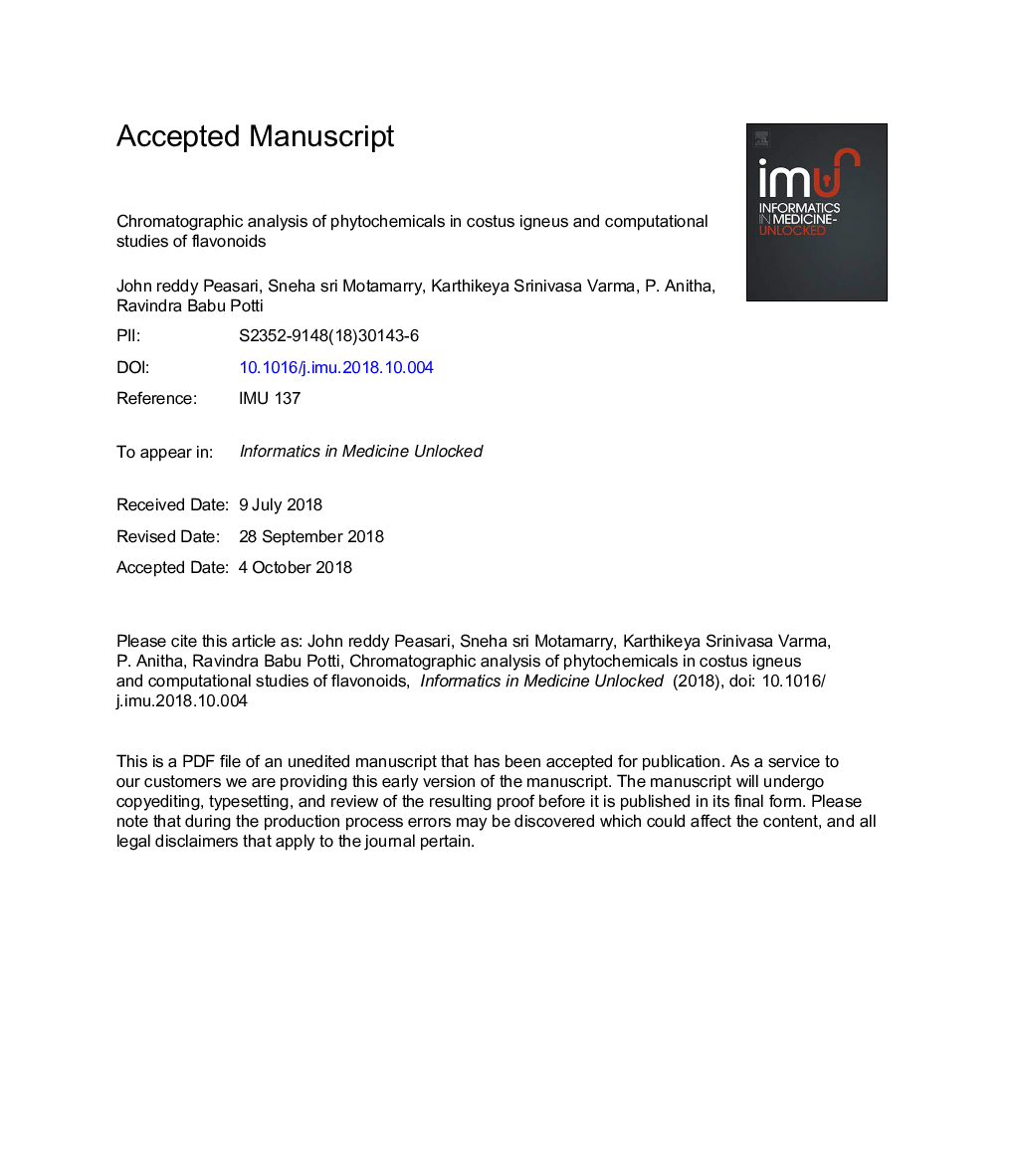| Article ID | Journal | Published Year | Pages | File Type |
|---|---|---|---|---|
| 11028077 | Informatics in Medicine Unlocked | 2018 | 19 Pages |
Abstract
Costus igneus, also known as Spiral flag, belongs to the Costaceae family. Recently, studies have emphasized the anti-diabetic potential of this plant. Literature studies show that it possess hypo-lipidemic, diuretic, anti-oxidant, anti-microbial, anti-cancerous properties. Phytochemical investigations reveal the presence of carbohydrates, proteins, triterpenoids, alkaloids, tannins, saponins, flavonoids, and steroids. In the present study, thin layer chromatography and high performance liquid chromatography profiling was performed for quercetin. The leaf showed the presence of quercetin with Rf value of 0.56 as compared with the standard Rf value. HPLC chromatograph of Standard and Leaf Extract exhibited peaks at 4.263â¯min and 4.019â¯min. Further quantitative analysis was conducted to determine the total flavonoid content of the leaf extract. It is a naturally occurring bioflavonoid, and an inhibitor of insulin receptor tyrosine kinase-catalyzed phosphorylation of exogenous substrate. Docking studies were performed to determine the interaction of polyphenols with Insulin Receptor Tyrosine Kinase, meant to be a target for diabetes. Insulin receptor kinase (PDB Id:1IR3) was selected as the target molecule. Flavonoids such as quercetin, kaempferol, epicatechin, roseoside, and the standard anti-diabetic drug pioglitazone were selected as ligand molecules. The docked complex was visualized in the Maestro Visualizer of the Schrodinger suite. All of the compounds formed hydrogen bonds with the residues of the receptor. Quercetin showed the best binding energy, with â7.28â¯kcal/mol indicating improved interactions via hydrogen bonds with the active site residues. Computational studies revealed that quercetin and kaempferol have the best binding energies, as compared to the standard drug pioglitazone (â6.26â¯kcal/mol), which activates insulin receptor tyrosine kinase. From the present study, we conclude that quercetin can be useful as a herbal therapeutic agent for diabetes.
Related Topics
Physical Sciences and Engineering
Computer Science
Computer Science (General)
Authors
John reddy Peasari, Sneha sri Motamarry, Karthikeya Srinivasa Varma, P. Anitha, Ravindra Babu Potti,
